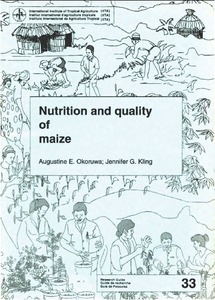| dc.contributor.author | Ntawuruhunga, Pheneas |
| dc.contributor.author | Kiryowa, M. |
| dc.contributor.author | Okechukwu, R. |
| dc.contributor.author | Otim Okello, F. |
| dc.date.accessioned | 2019-12-04T11:24:56Z |
| dc.date.available | 2019-12-04T11:24:56Z |
| dc.date.issued | 2012-02 |
| dc.identifier.citation | Ntawuruhunga, P., Kiryowa, M., Okechukwu, R. & Otim Okello, F. (2012). Preliminary results of screening IITA improved germplasm for resistance to cassava brown streak disease (CBSD) in Uganda. In Proceedings of the 11th triennial Symposium of the ISTRC-AB held at Memling Hotel: Tropical roots and tuber crops and the challenges of globalization and climate changes, 4-8 October, Kinshasa: Democratic Republic of Congo. (p. 398-405). |
| dc.identifier.uri | https://hdl.handle.net/20.500.12478/4491 |
| dc.description.abstract | For quite some time, cassava breeding activities of the International Institute of Tropical Agriculture (IITA) in Uganda were mainly focused on developing genotypes resistant to cassava mosaic disease (CMD), which was the major biotic production constraint since the early 1990s. Although cassava brown streak disease (CBSD) was reported some time back in 1940s, it had been dormant in Uganda. However, in early 2004, cases of CBSD were reported and re-confirmed both onstation (Namulonge) and in farmers' fields around the country. The symptoms of CBSD were observed on cassava in some locations in central Uganda this time in relatively higher incidence, albeit localized, on some of the popular CMDresistant varieties being grown country wide by farmers. This has caused serious concern in the country since cassava production has just been restored through use of CMD-resistant varieties following devastation by the unusually severe CMD epidemic in the 1990s. This, therefore, raised a need to re-screen all the improved germplasm under conservation for resistance to the new disease. Re-screening began in 2005 with a total of 963 improved genotypes initially conserved in situ at Serere research station. The trial was established in two sets (one with 528 and the second with 435 genotypes) at Namulonge, Central Uganda, a CBSD hotspot, using a checkplot design with single row plots of 1 x 10 M. Cultivar TME 204 was used as a spreader and check. Biotic data was taken at 2, 4, 6, 7, 8 and 9 MAP for CMD, CBSD, cassava bacterial blight (CBB), cassava anthracnose disease (CAD) and cassava green mites (CGM). The first set was evaluated at 15 months after planting while the second set was evaluated at 12 MAP. At harvest data was collected on number of tubers, CBSD storage roots score and yield. The preliminary results indicated that five hundred and sixty six (566) genotypes were resistant to CMD; four hundred and ten (410) genotypes did not show any foliar and storage roots CBSD symptoms though they could have been susceptible to CMD. Six hundred and twenty four (624) genotypes showed no foliar CBSD but may have showed root symptoms, while six hundred and five (605) showed no CBSD storage root symptoms. Two hundred and sixty (260) showed resistance to both CBSD (foliar and storage roots) as well as CMD. The study showed that CBSD severity increases over time and negatively affects fresh storage roots yield. These preliminary results showed hope for possible sources of CBSD resistance. |
| dc.language.iso | en |
| dc.subject | Cassava |
| dc.subject | Germplasm |
| dc.subject | Screening |
| dc.subject | Resistance |
| dc.subject | Plant Diseases |
| dc.subject | Viruses |
| dc.title | Preliminary results of screening IITA improved germplasm for resistance to Cassava Brown Streak Disease (CBSD) in Uganda |
| dc.type | Conference Paper |
| dc.description.version | Peer Review |
| cg.contributor.crp | Roots, Tubers and Bananas |
| cg.contributor.affiliation | International Institute of Tropical Agriculture |
| cg.coverage.region | Africa |
| cg.coverage.region | East Africa |
| cg.coverage.country | Uganda |
| cg.authorship.types | CGIAR single centre |
| cg.iitasubject | Cassava |
| cg.accessibilitystatus | Limited Access |
| local.dspaceid | 100741 |

